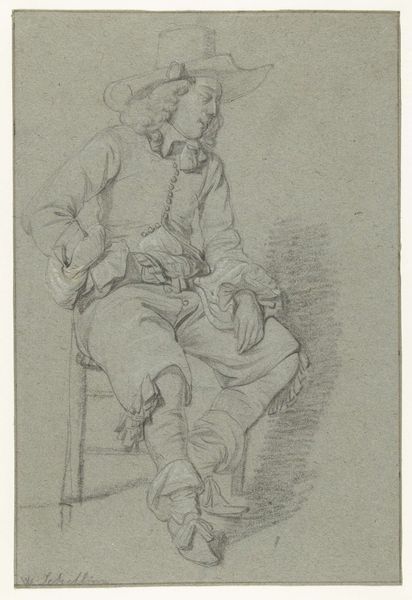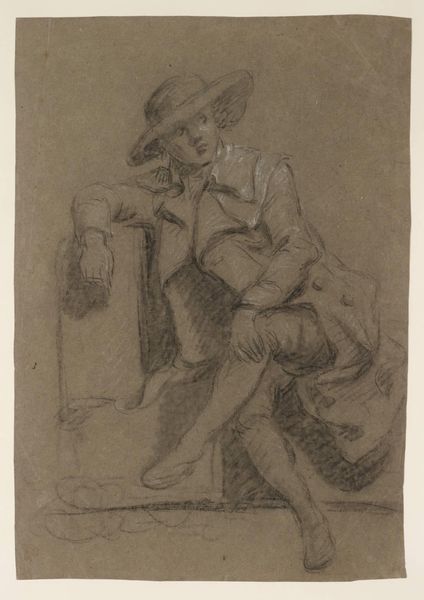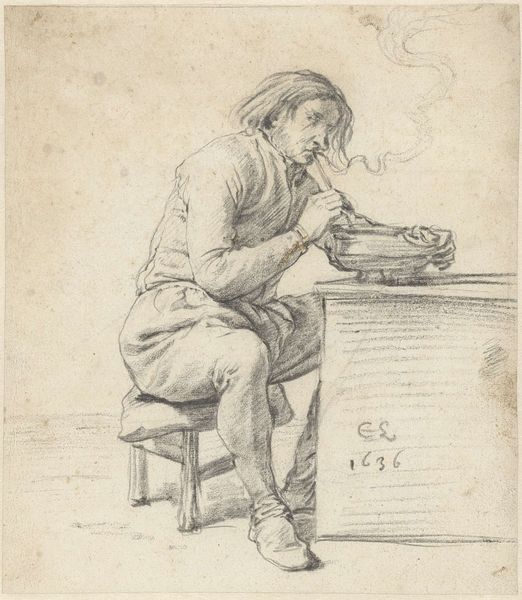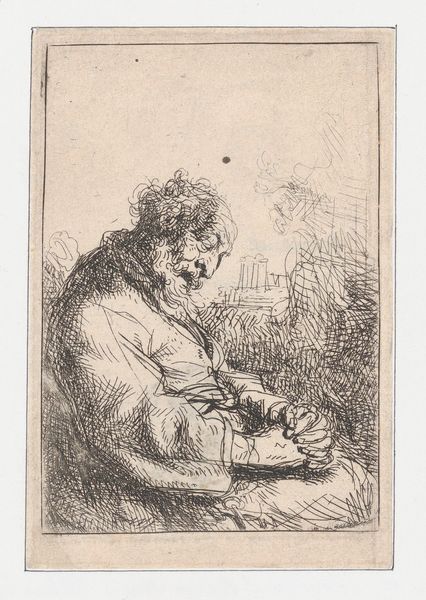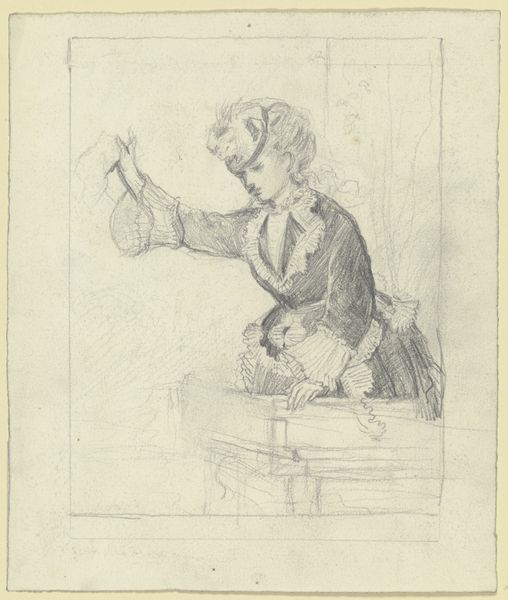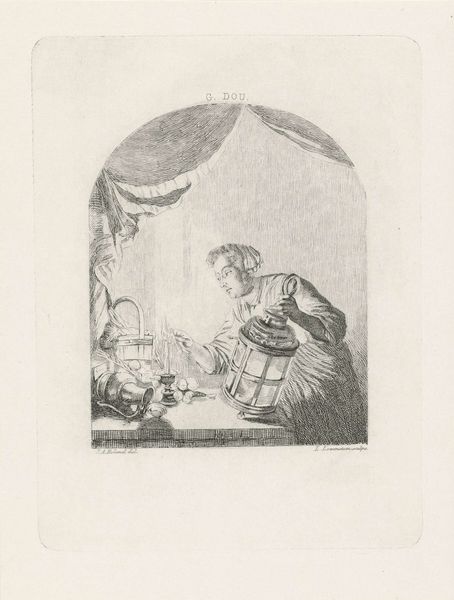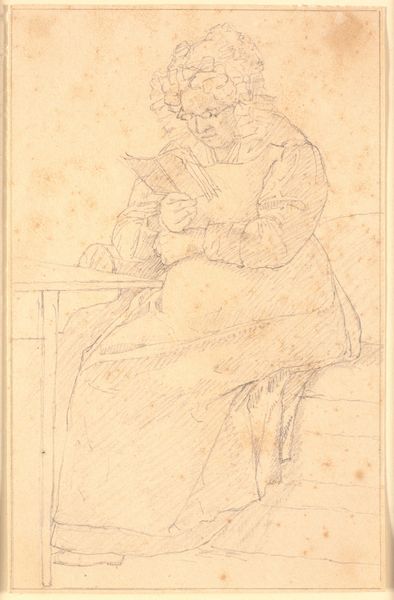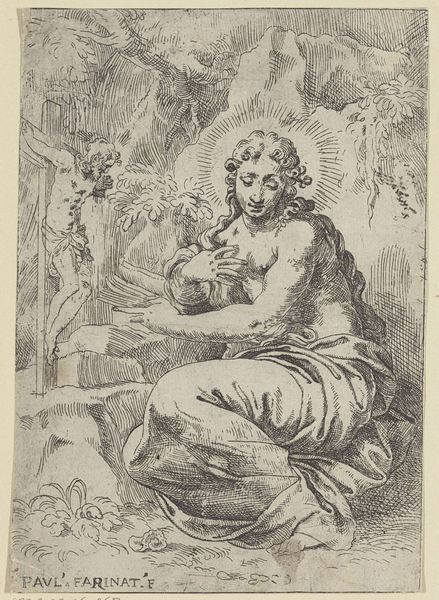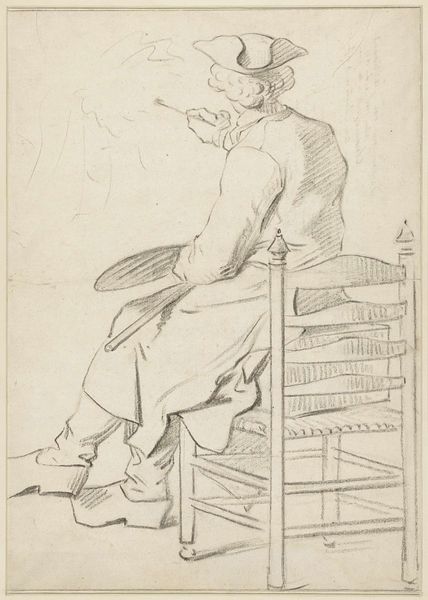
Smoking Peasant, Seated, Facing Right, on an Upturned Half Barrel c. 1637 - 1650
0:00
0:00
drawing, pencil
#
portrait
#
pencil drawn
#
drawing
#
aged paper
#
toned paper
#
light pencil work
#
dutch-golden-age
#
pencil sketch
#
figuration
#
personal sketchbook
#
pen-ink sketch
#
pencil
#
sketchbook drawing
#
pencil work
#
genre-painting
#
sketchbook art
#
realism
Dimensions: height 104 mm, width 80 mm
Copyright: Rijks Museum: Open Domain
Curator: Good morning. Welcome. Before us is "Smoking Peasant, Seated, Facing Right, on an Upturned Half Barrel," a pencil drawing by Hendrik Potuyl, likely created between 1637 and 1650. Editor: It’s a striking study. The subdued light, almost ghostly figure, the smoke itself like a fragile idea escaping into the ether… there's a poignant, contemplative quality to it. Curator: Absolutely. Consider the Dutch Golden Age at the time. Potuyl was working in a society grappling with shifting social hierarchies. The representation of everyday life, even of the lower classes, becomes increasingly visible in the art. This image, while seemingly simple, opens up the view into the lives of ordinary people. Editor: Precisely. The focus on line and tone in Potuyl’s piece allows him to model the figure and surrounding space minimally. I see an almost abstract quality, pushing realism towards suggestion. Observe how the delicate strokes around the head create a halo effect. It almost feels like we’re looking at a saint of tobacco. Curator: Haha, yes, but let's also recognize that genre painting of the period frequently depicted peasants. Often serving to moralize about excess or portray idealized rustic life. But in Potuyl's composition, there is more than just didacticism, the sitter exudes contentment, or perhaps boredom? Editor: He certainly embodies a captivating sense of stillness. His posture—slouched, pipe in hand—reflects a deeper engagement with simple pleasures. What I find remarkable is the tension between detail, say in his face, and the quickness of the background. Curator: It prompts one to consider the context of production too. Sketches like this were sometimes studies for larger paintings or even independent artworks sold in the burgeoning art market. The market democratized access and shaped both subjects and how painters handled it. Editor: Well, by giving primacy to certain aesthetic relationships of light, space, and form, the artist draws out, however subtly, a deep psychological complexity from an ordinary subject. I find the sketch's strength lies in Potuyl’s conscious rendering of its formal features. Curator: Ultimately, a humble piece offering us a glimpse into 17th-century Dutch society and an opportunity to appreciate Potuyl's hand. Editor: An image radiating introspection through the masterful simplicity of pencil strokes.
Comments
No comments
Be the first to comment and join the conversation on the ultimate creative platform.
